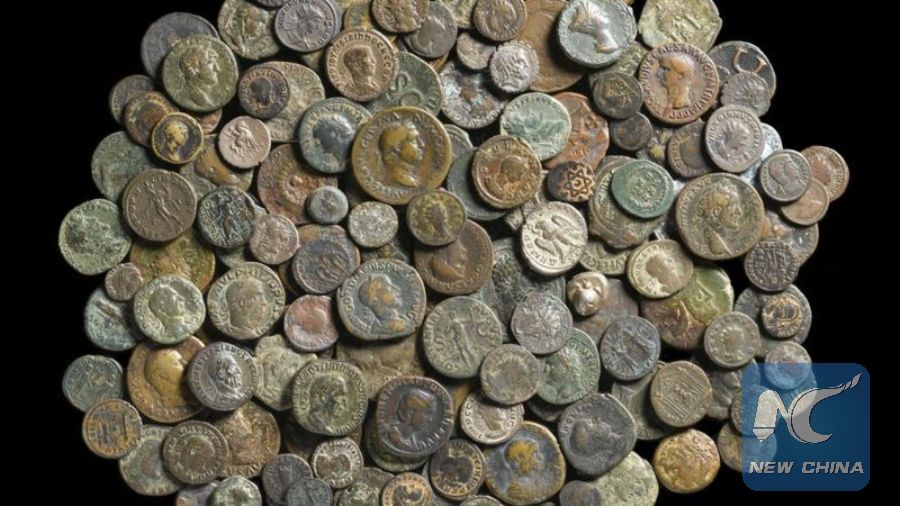
A vast collection of ancient coins from far-flung locations across the globe, including Syria and China, has been been discovered tucked away in a drawer at a castle in the county of Kent in Britain. (Photo curtesy of the National Trust)
LONDON, Nov. 4 (Xinhua) -- A vast collection of ancient coins from far-flung locations across the globe, including Syria and China, has been discovered tucked away in a drawer at a castle in Britain.
The unique set, comprising 186 coins in total, spans twenty-five centuries of history, the National Trust (NT), custodians of Scotney Castle said Saturday as the collection went on show to the public for the first time.
Other coins in the collection, discovered at the castle in the English county of Kent, come from closer to home, including a late eighteenth century Welsh bronze token.
The NT said the coins were found by volunteers at the castle as they searched for photographs in a study drawer. Research into family diaries in the archive suggests the coins were amassed during the nineteenth century by avid collector Edward Hussey III and his son Edwy, who lived at the castle.
The coin collection reaches as far back as Archaic Greece, with a seventh century B.C. piece. This silver token is one of the earliest struck in Europe, and comes from the tiny island of Aegina. It features a clear depiction of a sea turtle, a creature sacred to Aphrodite.

A vast collection of ancient coins from far-flung locations across the globe, including Syria and China, has been discovered tucked away in a drawer at a castle in the county of Kent in Britain. (Photo courtesy of the National Trust)
The bulk of the collection is made up of Roman coins, ranging from the late second century BC to the late fourth century AD.
The NT said it was possible that the Husseys, like many collectors, were trying to gather a "complete set" of Roman rulers. Despite the difficulty of this -- Roman succession was complex and many coins of the shorter reigns very rare -- they were close to achieving it.
National Trust archaeologist Nathalie Cohen said: "We know that Edward and Edwy Hussey had a great interest in collecting, but this considerable cache of fascinating coins shows just how much their interest grew into a collection of exceptional importance. What is a mystery though is why a collection of this caliber ended up at the back of a drawer."
Experts from MOLA (Museum of London Archaeology) have been consulted by the National Trust and consider eighteen of the coins to be "rare" examples.
MOLA's Julian Bowsher said: "It was a delight, as a coins specialist, to examine such a significant and diverse collection. A particular highlight was seeing Roman coins that rarely appear in Britain, such as those of the 3rd century emperors Balbinus, Pupienus and Aemilian, none of whom ruled for more than a year."
The records also give insight into the purchase value of the collection in the nineteenth century. In Edward's diary from 1823, the "Accounts" section lists him purchasing "Coins" priced from 4 shillings to 7 shillings and 6 pence (0.26 U.S. cents to 0.49 U.S. cents respectively)
Scotney Castle was the Lamberhurst home of the Hussey family for 200 years before it was left to the trust. The NT opened it to the public in 2007.

